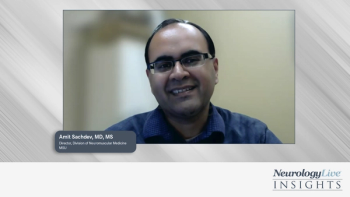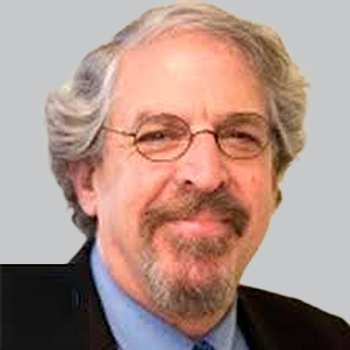
Trends in Migraine: COVID’s Impact and Barriers to Treatment
Deena Kuruvilla, MD, director, Westport Headache Institute, offered her insight into the trends in the clinical care of migraine and the effect that the pandemic has had on patients.
Now almost 2 full years into the pandemic, the literature on COVID’s effect on headache disorders, in general, has become clearer. Similarly, its downstream impacts on medical supply lines and patient quality of life have been elucidated, with many migraine specialists experiencing new challenges to overcome for their patients. An unavoidable occurrence, the pandemic’s effects on patient care are wide-reaching, and likely far from completely understood. Its influence on medical research, developments in care, and patient quality of life remain ongoing.
As has been the case for virtually every patient globally, the COVID-19 pandemic has had an impact on the care they’ve received since 2020—this is no different for the 40 million
To find out more about the sway the pandemic has had on care to this point and the overall treatment trends that have developed in response to and during it, NeurologyLive spoke with Deena Kuruvilla, MD, director, Westport Headache Institute. Particularly, with this year’s
NeurologyLive: What are the trends in patient care that have been discussed in your conversations with your colleagues at AHS 2021?
Deena Kuruvilla, MD: Patients during the pandemic certainly lost some of the resources in their toolbox that they use for migraine prevention. We actually had a whole course I was the course director for at the AHS meeting, focused on a window into the life of a migraine patient during the pandemic. I had some of my colleagues also comment on the physician or provider experience of providing medical care during the pandemic, too. The biggest thing I've heard from colleagues is that people with migraine have experienced a worsening in their migraine frequency and severity for so many different reasons.
One of the big reasons is possibly missing their procedures such as Botox, or onabotulinumtoxinA, for the prevention of migraine. I've also heard from my colleagues that patients had delays in obtaining their medication and they've had delays in updating their refills because they couldn't see their provider on time. Overall, based on their access to their headache provider and access to medications, that was a whole side of the coin that was complicated during the pandemic.
Another side of the coin that I heard about was the patient experience at home. As you know, a lot more people are using that the virtual option to work from home. They have more screen time, are taking fewer breaks and kind of working continuously, and their workday is kind of melding into their sleep and their family time and relaxation time in the evenings, and vice versa. Stress levels are up for many people. There are a lot of those home components that have changed during the pandemic, too, that have also contributed to that the worsening of migraine frequency and severity.
READ MORE:
That AHS core precourse was very interesting, though I'm biased, of course. But it was interesting. There were several other really interesting presentations on pipeline treatments and new medications that have new indications. It was interesting to hear some of those talks virtually—in person, conferences are definitely much better because we can actually talk to people face-to-face and exchange ideas. We also schedule lunch meetings and dinner meetings to exchange more extensive ideas. So virtual meetings do have that downfall, where we don't get to mingle with as many people or talk for an extended period of time about how practice is going, how life is going, how patients are doing, and all that good stuff.
Based on your practice and interaction with patients, has there been a shift in how patients are having to adjust their daily lives amid the pandemic?
Absolutely. There's definitely been lifestyle that has contributed to worsening frequency and severity for migraine patients, and then there's the medical care access point that's been an issue. There are so many lifestyles issues that my patients have reported to me. Delayed caffeine in the mornings or drinking too much caffeine to stay focused on that computer work all day, using more alcohol—alcohol sales went up substantially over the last year. When I read the last statistic, it was in the hundreds range percentile wise. Alcohol has been a contributor for many people for causing migraine attacks and disrupting sleep. Many people said that they're on their phone much more, or on devices, and that's really interfered with falling asleep and staying asleep. Stress levels, depression with social isolation, anxiety with not seeing loved ones, and being in fear of COVID—all of these have been huge factors for our patients in reporting more worsening disease states.
Outside of the pandemic-influenced factors, what are some of the challenges that you see with your patients?
The 2 biggest barriers that I've observed in talking to my colleagues and talking to patients are: First, finding a physician or a provider who has the expertise in headache disorders, or in whatever condition specialty they're looking for. Finding a provider who's educated in that field and is able to offer these options to their patients is a huge barrier for patients. The second big barrier is working with insurance companies to get treatments approved.
With the first barrier, provider education and knowledge, even though we have so many new options for migraine prevention and acute treatment, the vast majority of general neurologists, primary care providers, pain specialists, OB/GYN physicians—they're not aware of these treatments and they don't really understand where to use them in their practice. Many folks don't understand the need for a preventive treatment and an acute treatment for patients. They don't know where these new medications may fit into their practice. That's a very common question that I received.
Many of the general neurologists and primary care physicians have expressed to me that they're not interested in treating headache disorders. I think headache in general, as a subspecialty, at times has a stigma towards it. There's this mindset out there that headache medicine is very difficult to do. The patients may be very difficult to treat or have personality disorders—these are things I've heard from my neurology colleagues. They're like, “Oh, you need to you need to do this, we'll refer them to you, and you take care of it.” But we don't have the time to go through the details and the soup-to-nuts portion of treating a patient with headache. I think that that is a huge barrier for the 40 million people with migraine, to obtain the optimal treatment that they need to reduce their disability and really get back to their regular lives.
Transcript edited for clarity. You can hear the entire conversation with Deena Kuruvilla, MD, on
Newsletter
Keep your finger on the pulse of neurology—subscribe to NeurologyLive for expert interviews, new data, and breakthrough treatment updates.


































